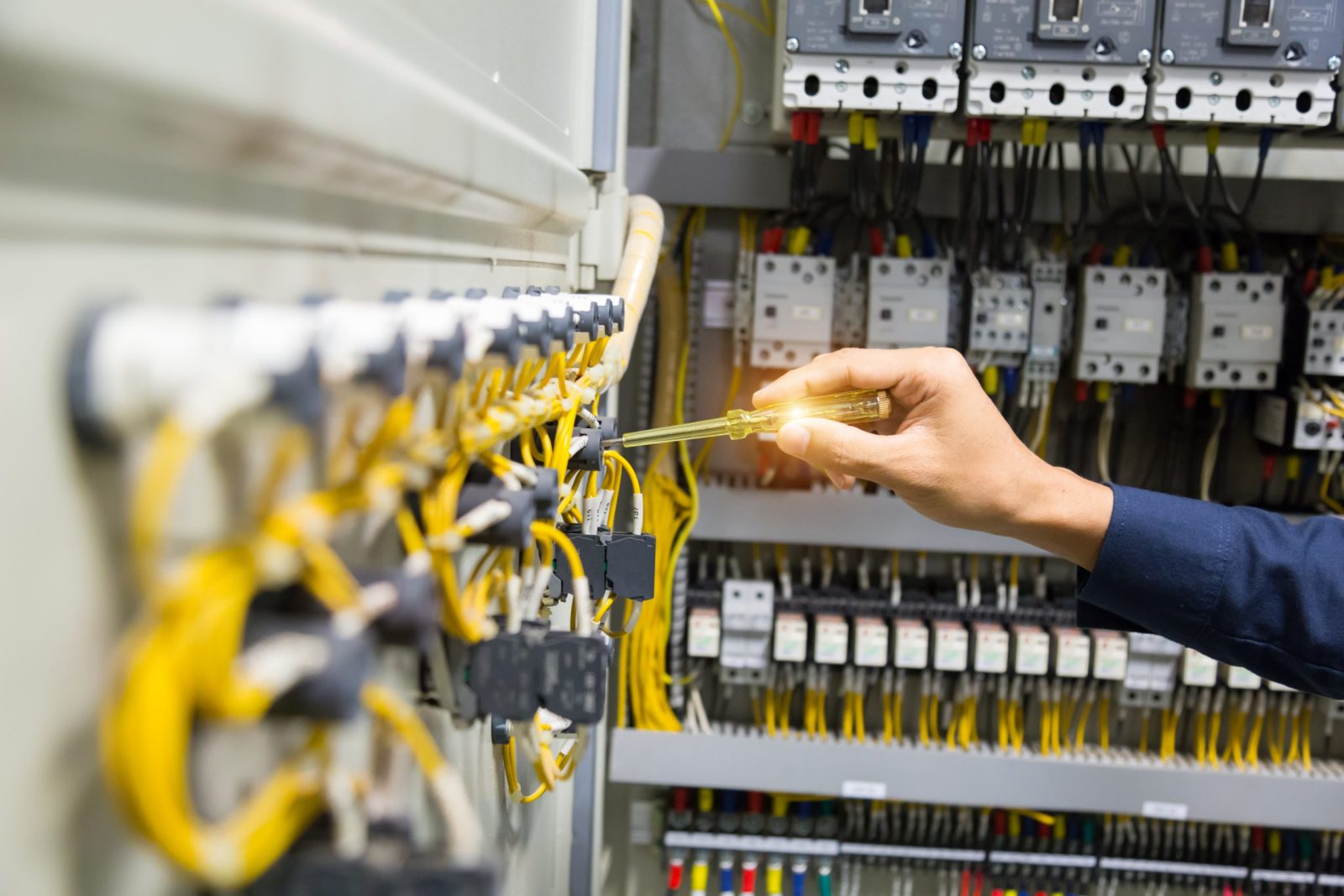The breaker panel is where the electricity in your home is divided into circuits for lights, receptacles, and more. It is essential to have a licensed electrician handle any fuse box replacement or circuit breaker installation jobs.
The panel is a hardwired and dangerous component that should not be handled by homeowners on their own. Some older panels are prone to malfunction and pose a fire danger to your home.
What is an Electrical Panel?
An electrical panel is the hub of your home’s electrical system. It serves two crucial functions: it carries electricity to the outlets and fixtures in your home, and it prevents overloading that could cause a house fire.
The modern electric panel looks like a metal box built into the wall in your garage, basement, or utility room. It usually has a door with a number of switches or breakers on it. These are numbered and should have labels alongside them that describe what part of the house they control the power to.
The electrical panel may also have surge arresters, which prevent lightning strikes or utility power surges from damaging the components inside the panel due to overvoltage. It may also have step-down transformers, which reduce incoming electrical voltage to the level required for different electric devices. Finally, the electrical panel often has terminal blocks, which help to organize and distribute the array of wires that enter and exit the panel from various sources.
What Is a Breaker Panel?
Your breaker panel is where the incoming electricity that comes from your utility company is divided into the circuits that supply the lights, outlets and appliances throughout your home. If something in your house loses power, you can flip the corresponding switch to shut off that circuit and restore service.
Each breaker switch has its own label to indicate which room or appliance it serves. In addition to making it easy to identify the switches during electrical repairs, these labels help when you need to know which switch to flip if your house experiences an emergency.
Your breaker panel usually looks like a metal box mounted on a wall in your garage, basement or utility closet and has a hinged cover to protect the switches inside. It’s usually safe to touch, but you should wear gloves when working on it to prevent electrical shock. Some breaker panels have empty slots that you can use for additional circuits when making room additions.
What Is a Fuse Box?
A fuse box is a metal box that contains fuses. Typically found in closets, hallways, mudrooms, basements, crawl spaces, or utility rooms, fuse boxes can contain either screw-in fuses (like light bulbs) or cylindrical cartridge fuses that fit into a metal fuse block and handle greater amperage. Fuse boxes have limited capacity and are not as safe as circuit breakers, as they can overheat wires and cause fires.
Unlike electrical panels, a fuse box does not automatically shut off the current when it overloads and instead requires you to replace the broken fuse by hand. Additionally, some insurance companies do not insure homes with a fuse box as they consider them a fire hazard. If you have an older fuse box and are experiencing frequent blown fuses, we recommend upgrading to a circuit breaker panel. Blown fuses are usually recognizable by the glass window of the fuse that has been melted, which can be cloudy or brown.
What Is a Sylvania Panel?
GTE Sylvania, or more formally known as Zinsco before their demise, manufactured popular electrical panels installed in homes in the 1970’s. These panels used a specific “bus” design that accepted only Zinsco circuit breakers. A professional home inspector or licensed electrician can open your breaker box and inspect the circuit breakers to determine if you have a Sylvania-Zinsco panel or if it needs replacement.
These panels are a fire and shock hazard in your home and need to be replaced by a professional electrician. They have been shown to melt all the way up to the bus bar and prevent breaker breakers from properly tripping. This can allow overheated wiring to continue running which ultimately leads to a home fire.
If you see soot on the outside of your breaker panel, or the inside is showing signs of overheating, this is an indicator that your panel needs to be replaced. A qualified home electrician can replace your faulty breaker panel with a safe, UL listed one.Electrical Panel Clearwater






Leave a Reply